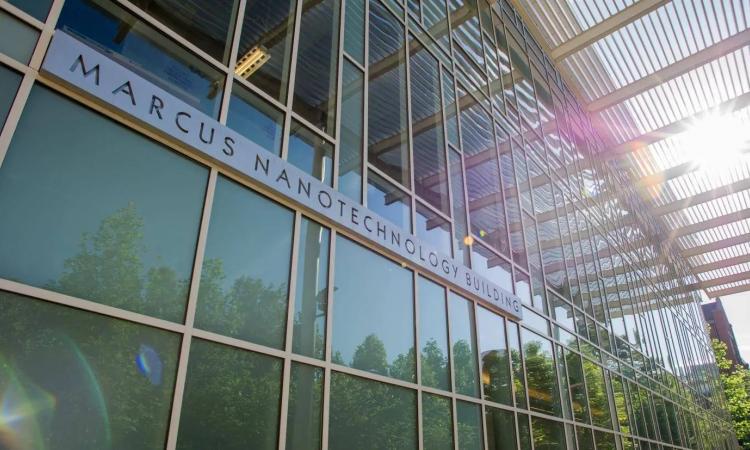The Ph.D. candidate’s research in the IEEE Journal on Exploratory Solid-State Computational Devices and Circuits underscores a growing industry focus on heterogeneous integration to power future AI systems.
(text and background only visible when logged in)

(text and background only visible when logged in)
When the IEEE Journal on Exploratory Solid-State Computational Devices and Circuits released its most-read articles for July, Madison Manley earned double recognition. The Georgia Tech School of Electrical and Computer Engineering (ECE) fifth-year Ph.D. candidate was the lead author on two of July’s top three articles.
Her paper, “Heterogeneous Integration Technologies for Artificial Intelligence Applications,” was at the top as the most-read article, while “Co-Optimization of Power Delivery Network Design for 3-D Heterogeneous Integration of RRAM-Based Compute In-Memory Accelerators,” came in as the third most-read.
“This one is special as it highlights the relevance and timeliness of Madison’s research,” her advisor, ECE Professor Muhannad Bakir, said.
The most-read article was a collaboration with fellow Ph.D. candidates Ashita Victor, Hyunggyu Park, and Ankit Kaul in Bakir’s Integrated 3D Systems Group, along with 3D Systems Packaging Research Center senior research scientist Mohanalingam Kathaperumal.
The paper introduces current and emerging heterogeneous integration (HI) technologies and their potential for AI systems.
The introduction of ChatGPT in 2022 sparked an exponential growth in artificial intelligence (AI) and high-performance computing (HPC) applications. This has led to a technological shift towards HI.
The research team surveyed recent commercial deployments of HI architectures that are designed for high-compute AI workloads from semiconductor companies such as Cerebras, Nvidia, AMD, Intel, and Tesla.
Manley’s other top read paper, “Co-Optimization of Power Delivery Network Design for 3-D Heterogeneous Integration of RRAM-Based Compute In-Memory Accelerators,” was co-authored with ECE Ph.D. candidate James Read (from Professor Shimeng Yu’s Laboratory for Emerging Devices and Circuits), along with contributions from Kaul.
This paper looks at three-dimensional HI (3D-HI) as a promising solution for analog compute-in-memory (CIM) AI accelerators, addressing the need for large AI models. However, there can be challenges in designing a 3-D power delivery network that does not impact performance.
To address the interdisciplinary challenges of power delivery in 3D-HI RRAM-based CIM technologies, the group proposed a rapid analysis flow enabling early design-space exploration of power delivery parameters and their impact on performance metrics for early-stage prototyping.
Manley has received several other awards, including the Herbert P. Haley Fellowship for the 2022-2023 academic year and the 2023 Electronic Components and Technology Conference student travel award.
(text and background only visible when logged in)
Related Content
Georgia Tech Joins $840M DoD Project to Develop and Manufacture Next-gen Semiconductor Microsystems
Researchers will contribute extensive 3D heterogeneous integration expertise to the Texas Institute for Electronics-led initiative.
Kim and Baig Awarded Qualcomm Innovation Fellowship
The two Ph.D. students will receive a year of support from Qualcomm to continue their pioneering research on chiplet-based system design.

